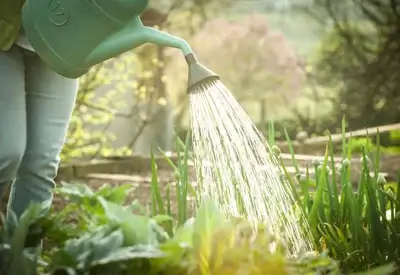
Those of us who adore gardening and can’t wait to get our hands in the dirt typically rush to the local nursery at the first signs of warmer weather to load up on beautiful flowers and lush greenery to plant. However, if you don’t have a good plan, you may get home and find yourself with a carload of plants that are either hard to maintain or do not perform well as the temperatures begin to soar.
Southern summers can often become unbearable, and any living thing that isn’t protected by shade is under threat of becoming baked. If you want your colorful garden to perform well in the heart of the summer, do your homework before you head to the nursery. It’s tough to keep our gardens lush and vibrant with the hot humid conditions during summers in the south—especially here in Northwest Florida. That’s why it is important to look for plants that can holdup well on their own in the heat, humidity and even through drought situations.
The good news is that even during the oppressive heat of summer, you can still plant and cultivate a flourishing garden filled with beautiful bedding plants. In fact, there are several plant species that thrive in our climate and soil. We’ve consulted with Manager and Owner of Floral Tree Gardens, Tena O’Daniel, to bring you a selection of sun-loving flowers and hearty plants that will help you create a beautiful summer garden you’re sure to love.
Muhly (Muhlenbergia capillaris)
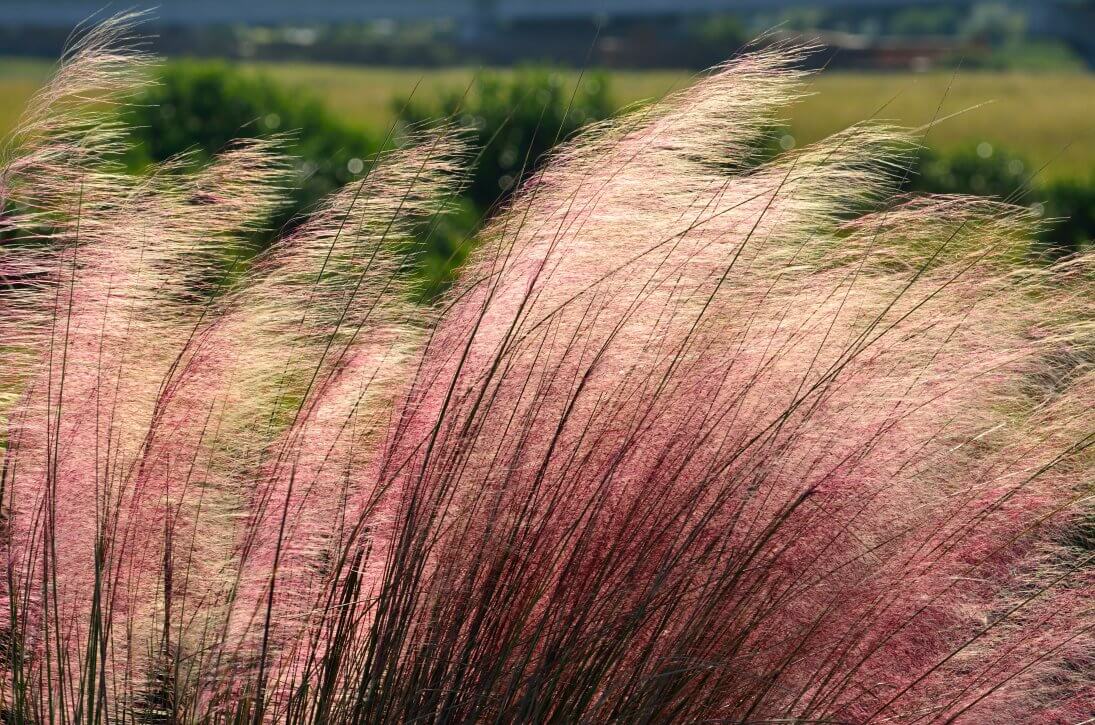
This versatile ornamental grass is a plant superstar, putting on a fabulous show each fall even if it receives little care during the year. Muhly grass is naturally found in Florida’s pine flatwoods, coastal uplands and even along its highways, but these days it’s also a popular choice in home and commercial landscapes. This easy-to-grow ornamental grass produces clumps that can reach 2 to 3 feet tall and up to 3 feet wide when mature. In fall, muhly grass produces fluffy pink to purple flower stalks that can grow up to 5 feet tall, giving the plant a distinctive appearance. A lovely white-flowering variety of muhly is also available. “Some of the best heat-tolerant plants for our area are ornamental grasses,” O’Daniel said. “Just a few examples that work well in hot drought-like conditions are Fountain grass, muhly and breeze.” O’Daniel also explained that ornamental grass like muhly are valued in home landscapes for their hardiness, ease of care, dramatic appearance, and the wide variety of colors, textures and sizes available.
African iris (Dietes bicolor)
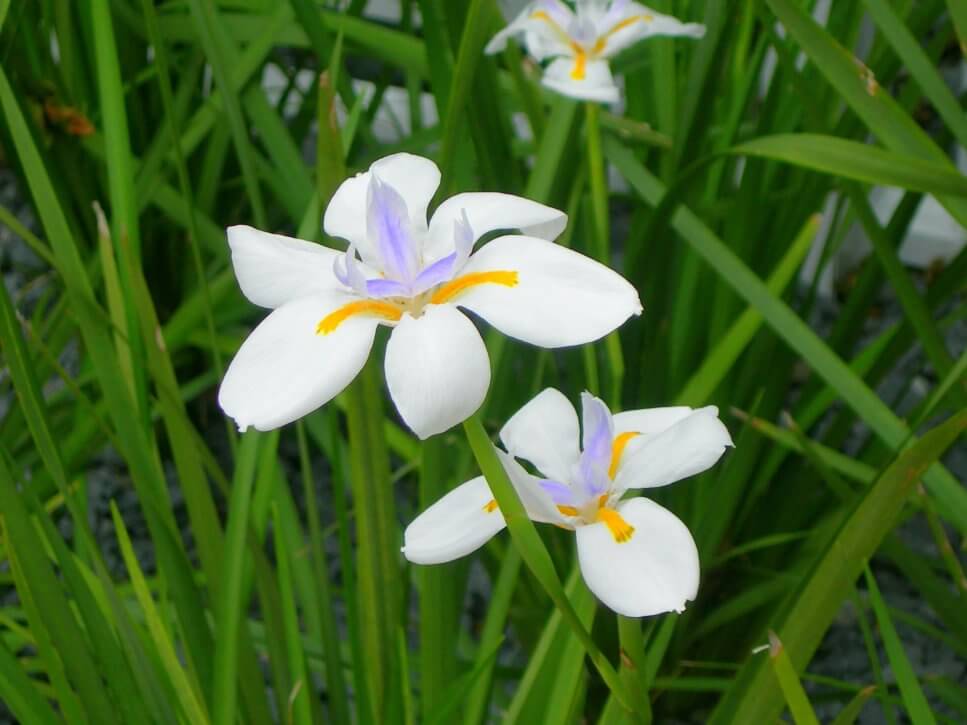
As its name implies, the African iris is a variety that originated in Africa. These hardy cousins of the lovely bearded iris (more commonly found in northern climates) produce beautiful flowers in the spring and all through the summer. It is low maintenance and thrives in full sun and can tolerate dry conditions. This plant will look great alongside a border or flower bed edge. It is also pest resistant. O’Daniel says that the African iris is a great all-purpose plant for home landscapes. Its sturdy, reed-like foliage is evergreen and a wonderful accent plant in the landscape. It produces bright white flowers with accents of purple and orange that grow on stalks that come up from the midst of the long, grass-like leaves. and grows 2- to 4-foot-tall plants from spring to fall. Call on African iris to add color and texture to tough landscaping areas. It stands up to heat, drought and neglect. African iris does spread slowly outward over time, so you will have to cut back (or even dig out) unwanted expansion at least once a year.
‘Firepower’ nandina (Nandina domestica)
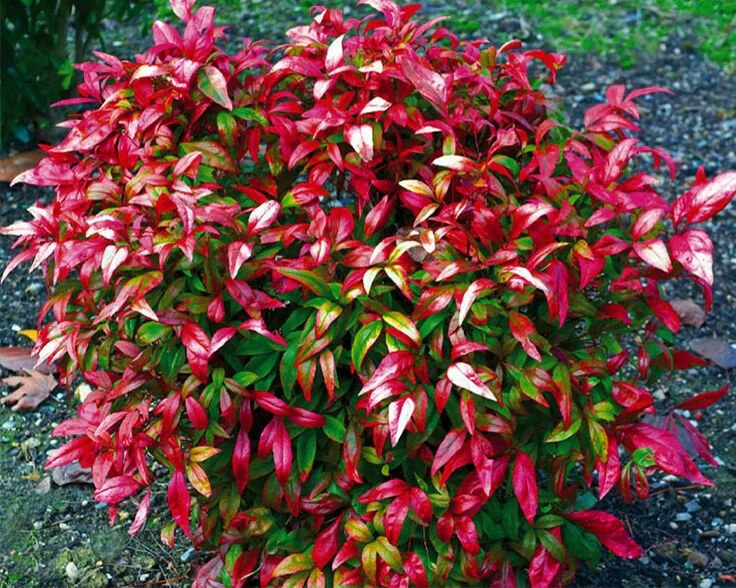
‘Firepower’ nandina (Nandina domestica) If you are looking for beautiful foliage in all seasons, ‘Firepower’ nandina is a great option. This plant thrives in both partial and full sun environments and is very low maintenance. ‘Firepower’ nandina, also referred to as Heavenly bamboo, is an upright, easy-to-grow evergreen shrub with long panicles of small white flowers that bloom in mid to late summer. The low-growing, broadleaf, evergreen shrub is characterized by upright, cane-like stems that emerge from a crown-like structure at the soil surface. It grows to be 24–60-inches tall. The ‘Firepower’ variety is a noninvasive dwarf cultivar, making it a great choice for small yards and tight spaces. It is considered pest free and does not require any pruning. Often it is marketed as “dwarf” because it is distinctly shorter than the standard species type and is slower growing. “Both the ‘Firepower’ nandina and African iris are great for landscaping since they are evergreens and can handle colder weather as well,” O’Daniel said. It is widely planted in masses as a shrubby ground cover or serves as an accent plant in many types of gardens and landscape designs.
Zinnia (Zinnia spp.)
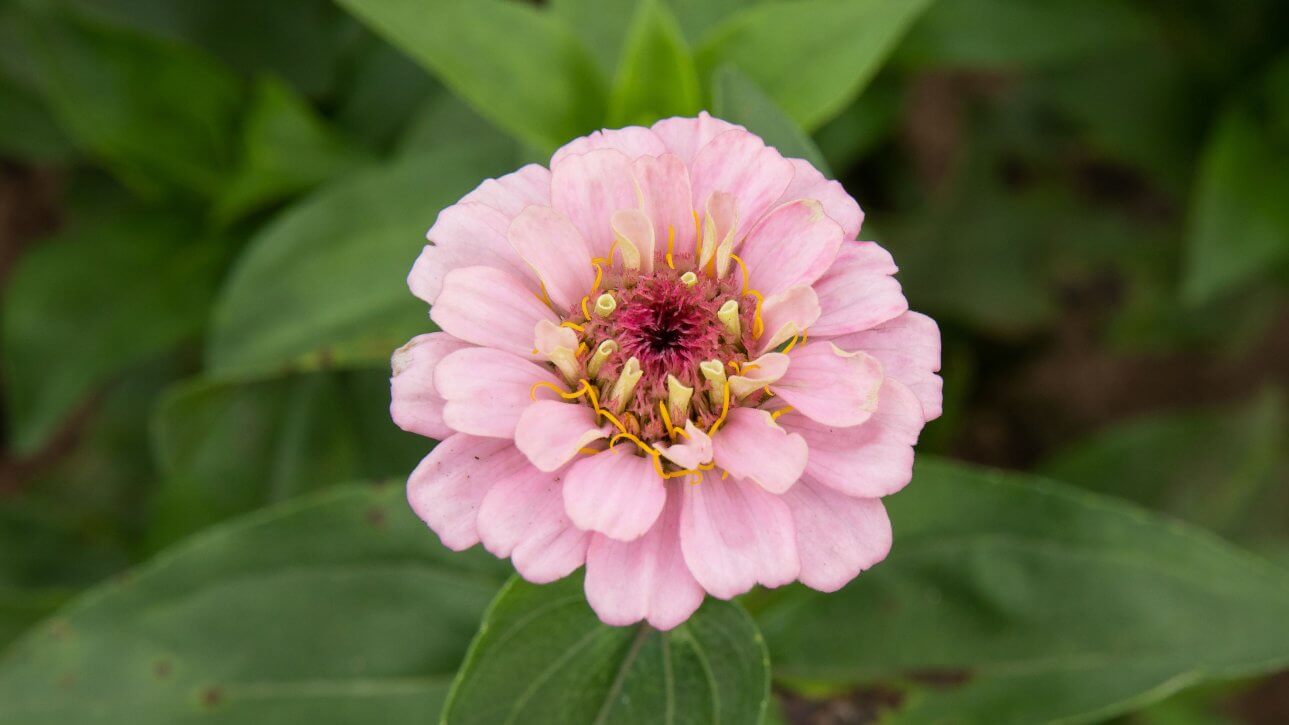
Zinnia (Zinnia spp.) These fast-growing, warm-season annual flowers bloom with abandon and require only minimal care. Zinnias produce beautiful flowers that come in vivid colors like red, pink, yellow and purple. The flowers are characterized by multiple layers of petals and are old favorites for the cutting garden. Zinnias can be as short as six inches or as tall as three feet. Zinnias can easily be started from seed and are a favorite of local pollinators. They can be planted in the spring throughout Florida and also in the fall in South Florida. Zinnias are tolerant of all but wet soils and need exposure to full sun. Zinnias are tough, but in order to thrive, they require well-draining soil. Tall varieties of the plant may also be pinched when young to help encourage branching. Old flowers should be removed to encourage continued flowering.
Lantana (Lantana spp.)
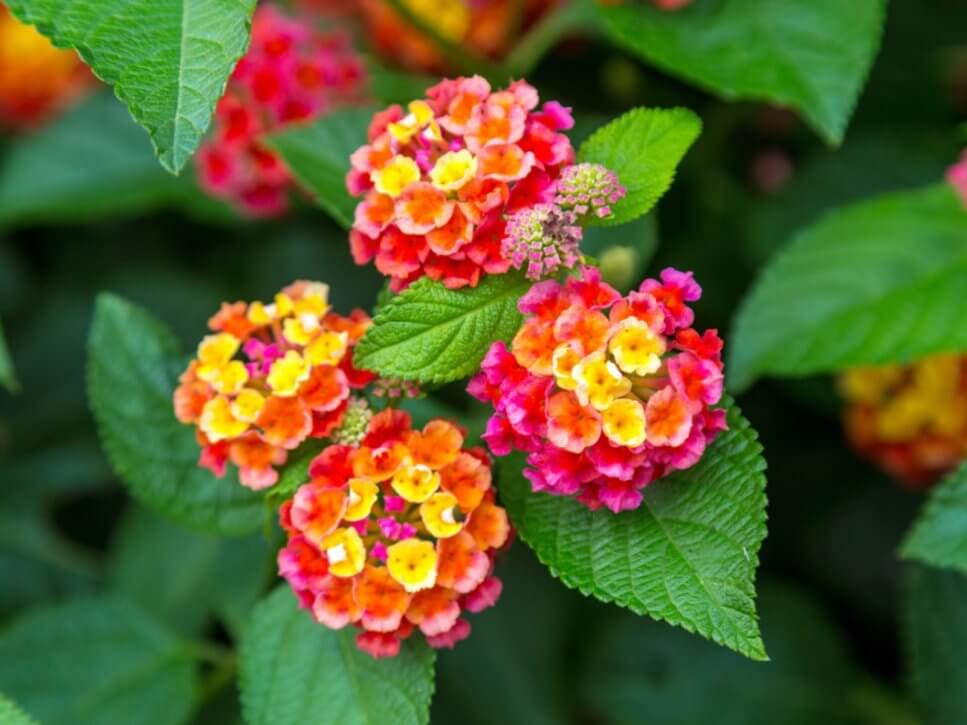
Lantana is one of the most popular landscape plants on the market. People often mistake them for weeds because of how rampantly they grow. Lantana requires very little attention and maintenance, which is convenient since yard work is the last thing most of us want to do in the summer. It is heat, salt and drought-tolerant. It’s easy to grow, and very low maintenance. Lantana comes in several attractive varieties. Their brightly colored orange, red, pink, lavender, blue or yellow flowers bloom almost year-round. The most common lantana is a non-native species, Lantana camara, however, choosing the right Lantana variety is not always so simple. UF/IFAS classifies Lantana camara as an invasive species. It quickly invades disturbed sites and is toxic to livestock. Gardeners should take care when choosing a lantana variety for their landscape. Lantana plants have a unique vine-like sprawling appearance from woody branches, making them popular to grow in outdoor hanging baskets or as ground covers. Lantanas will also attract pollinators such as hummingbirds, butterflies or bees and are often a top choice for use in butterfly gardens.
For more information on choosing the right plants for your summer garden or landscaping project, visit floraltreegardens.com.